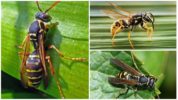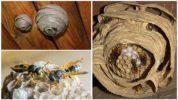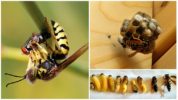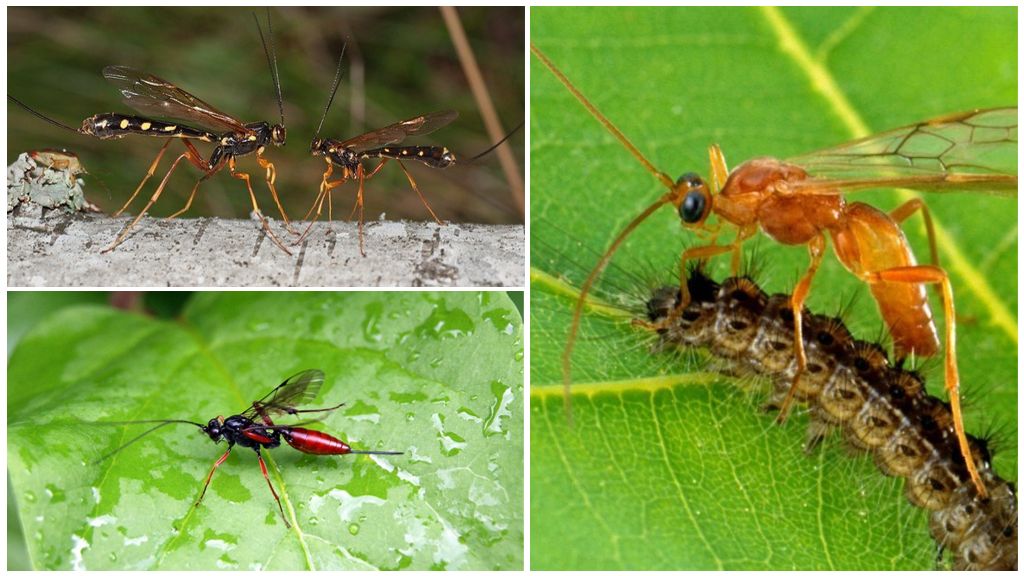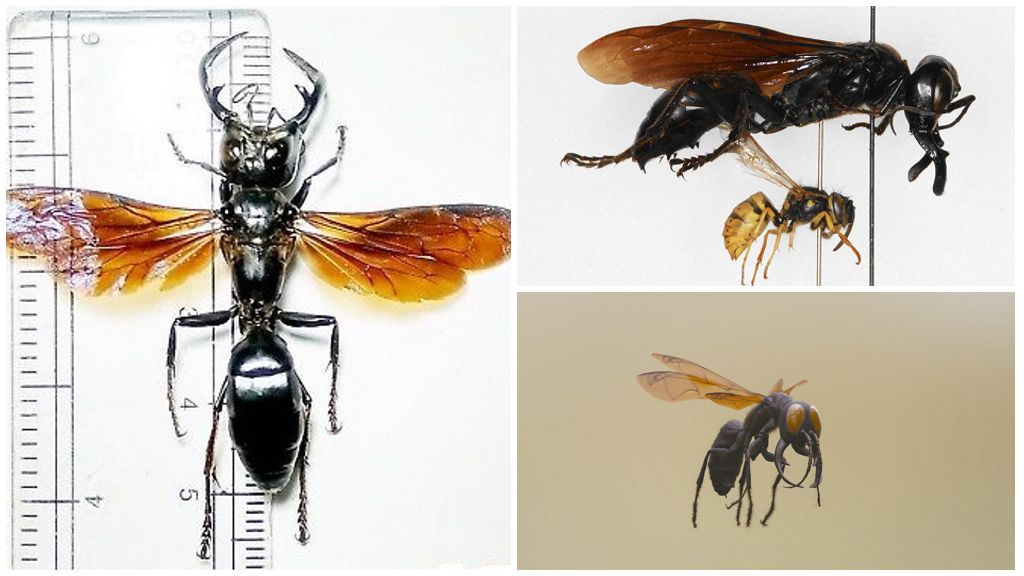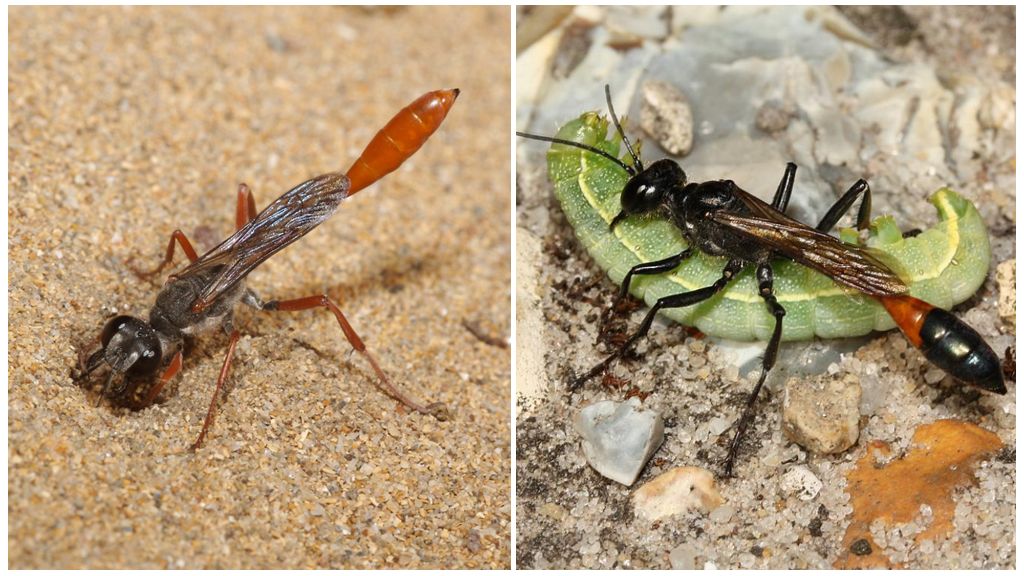- Paper wasps
- Vespiary
- Paper Wasp Reproduction
Paper wasps, they are also public, represent a huge subfamily of the family real wasps. They include a large group of polystins, vespins. The last subfamily also includes hornets. The name was given due to the structural features of the nest, a material that ultimately resembles paper. Live in a swarm led by a prolific female uterus, each individual performs its functions.
Description of appearance
If you ask a person to describe an ordinary wasp, he will begin to talk about a paper wasp, which is known to absolutely everyone, lives everywhere. In the world there are about 1 thousand species of this subfamily, 30 of them live in Russia.
The insect is brightly colored with characteristic stripes of black-yellow, orange. The body is divided into 3 parts - head, chest, abdomen. The transition between the abdomen and chest is very thin, which is why the concept of “wasp waist” was born in the people.
Head black, down, small mustache. The oral apparatus is equipped with powerful jaws that the insect uses to collect building material, as well as when fighting with the enemy, if it is impossible to pierce the sting. Three pairs of legs, thin transparent wings. A photo of a paper wasp is presented below.
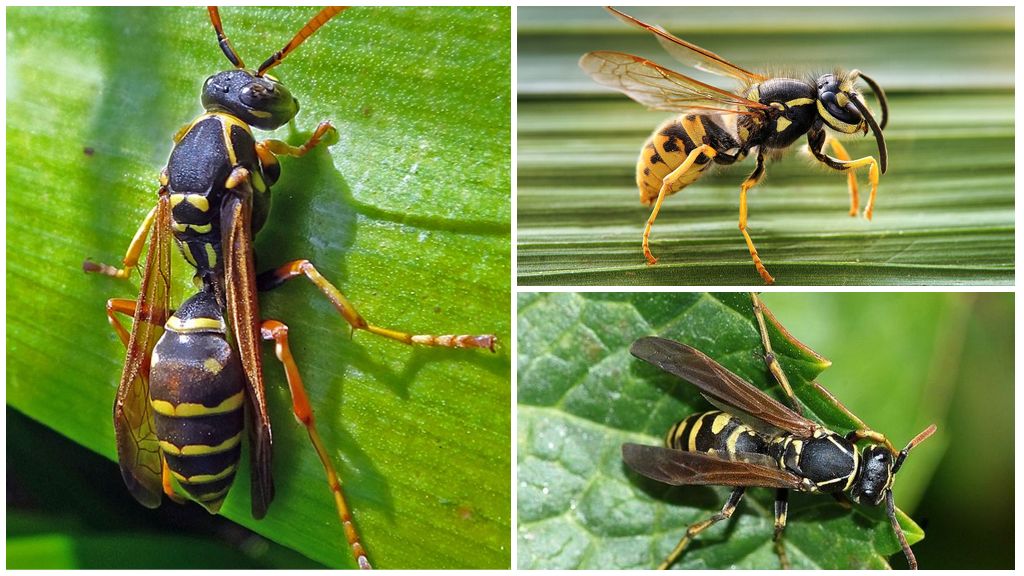
Interesting!
Pay special attention sting wasp. In one attack, the insect can sting up to 6 times non-stop. The sting resembles a sharp needle, pierces the skin well, it is perfectly taken out, unlike a bee. Aspen poison allergenic bite quite painful. Such an instrument is possessed mainly by females.
Social work
In tropical countries, paper wasps live for years, only one year has been allocated to insects in our area. A young fertilized female in autumn looks for a place for wintering under the bark of trees, in crevices, and with the onset of spring begins nest buildinglaying eggs.
To obtain building material, a paper wasp finds wood, spits out saliva, and after a few minutes scrapes the upper layer with its jaws. Chews with jaws, turns into a sticky, viscous substance. Flies to a selected place, initially forms a leg for a future nest. Then it produces cells, cell by cell. Lays eggs in each.
Initially, the uterus itself is engaged in feeding the larvae, but after the appearance of the first generation of working individuals, it discards all duties on them. Gradually, a nest of the average size of an apple is built. It resembles a sphere, bottom entrance. What a ready-made nest of paper wasps looks like can be seen in the photo below.
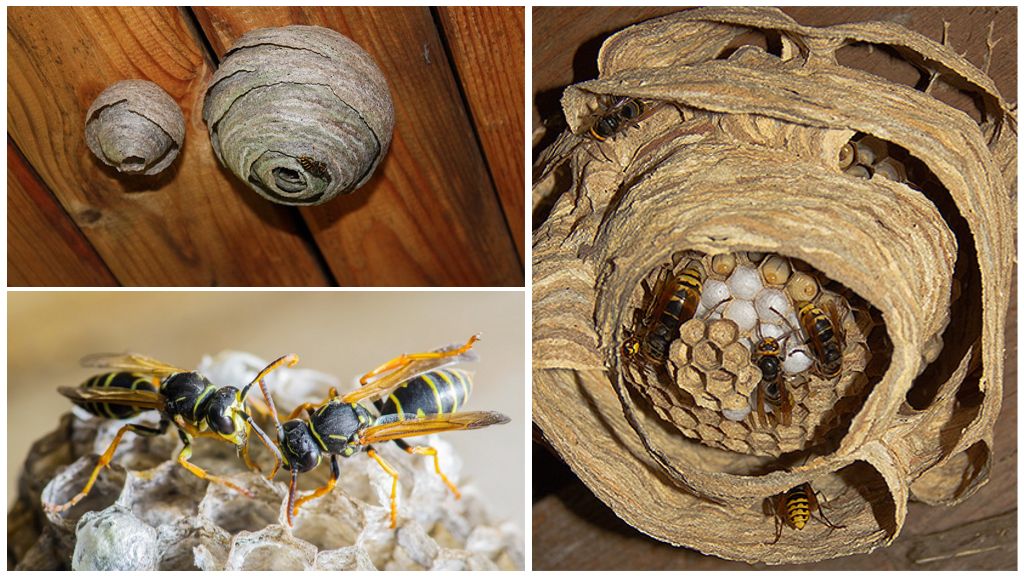
Gradually, the number of the aspen family increases, by the end of summer it reaches several thousand. The main part is working individuals that perform different functions. They build a nest, find food, feed larvae, protect the family.
Interesting!
Paper wasps communicate with sounds. They transmit signals to each other about danger, help, finding food. If a person accidentally appears near a nest, inadvertently waves his hands, runs the risk of being bitten by one wasp, but after a few seconds a whole swarm arrives.
Life cycle
In the fall, the nest becomes empty. Roy leaves the summer house, which was so intensively built throughout the warm season. With the onset of cold weather, working individuals, the old uterus become inactive, slow.Some of them die from natural enemies, others freeze. Only young females remain to winter to continue the clan, start over again.
Larvae are white worms. Extremely gluttonous. They eat exclusively protein foods, while adult paper wasps require nectar, fruit juices. For the sake of feeding larvae, wasps attack other insects, people, drag pieces of meat into a nest. At the last stage of development, the larvae pupate, and the imago emerges from the cocoon. The entire period from the egg to the imago takes about 20 days. Therefore, a colony of paper wasps becomes noticeable by mid-summer.
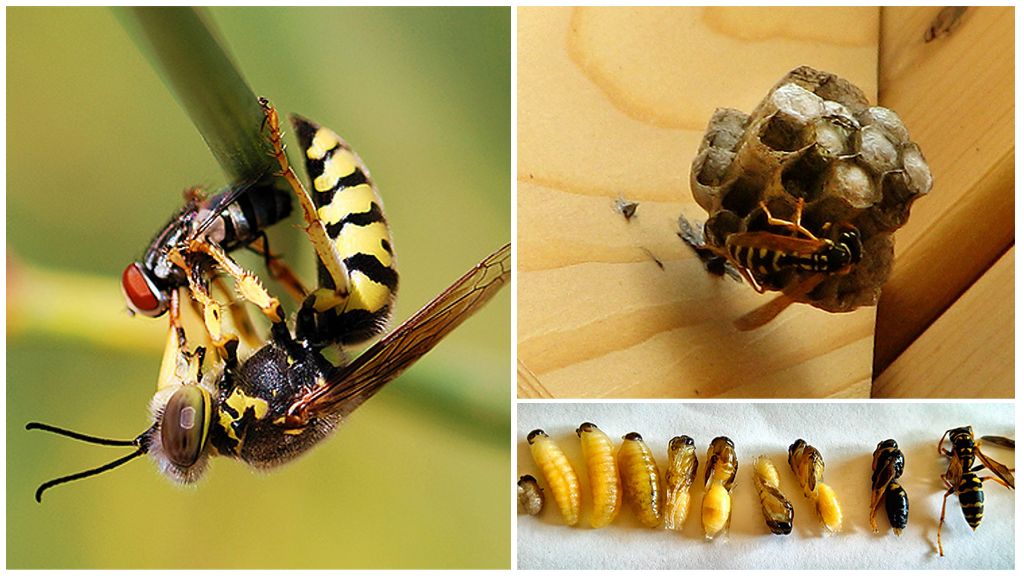
Getting rid of insects
A paper wasp builds a nest on trees, in old hollows, under a stone, in an abandoned anthill, just a successful hole in the soil. And also often settle near a person - in the garden, garage, on the balcony, attics, under the roof.
On a note!
The danger to humans lies in bites. With a severe allergic reaction, breathing difficulties, laryngeal edema, and death are possible. Small children are especially sensitive to poison. Even with a normal body reaction, the bites are painful, unpleasant.
You can get rid of paper wasps with trapspoison baits as well nest destruction. In an open area, the beehive is burned, filled with water. In a residential building, garage, cracks in the wall, fill with mounting foam. Under the roof, the nest is dipped in water or pulled out a family of paper wasps with a vacuum cleaner.
If the insects do no harm, they can be left alone because they bring not only harm but benefit. On the land they destroy a huge number of pests, pollinate plants, contribute to increased productivity.
